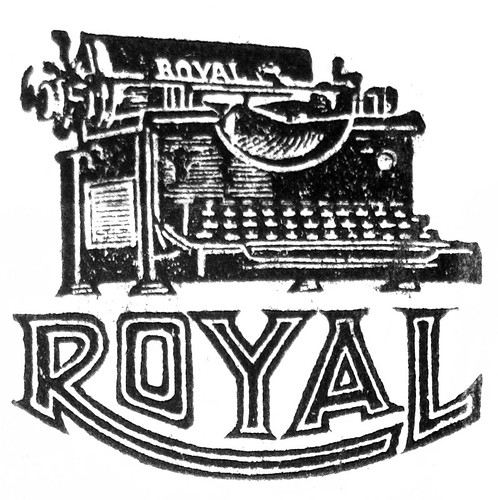- colrehogan
- Key Master
 Offline
Offline 
- From: Granite City, IL
- Registered: 05-2-2015
- Posts: 612
Re: Recent Acquisitions Thread
Found the serial number for my L.C. Smith on the previous page. It is 441670-8, which makes it made in 1922.
Smith Premier typewriters are cool!
- Repartee
- Key Master
 Offline
Offline 
- From: Brooklyn
- Registered: 12-10-2015
- Posts: 683
Re: Recent Acquisitions Thread
colrehogan wrote:
Found the serial number for my L.C. Smith on the previous page...
So where was the serial number?
"Damn the torpedoes! Four bells, Captain Drayton".
- colrehogan
- Key Master
 Offline
Offline 
- From: Granite City, IL
- Registered: 05-2-2015
- Posts: 612
Re: Recent Acquisitions Thread
Lower right front on the inside. Behind and to the right of the backspace key. Several pics on the typewriter database show the location too. I guess I should have checked there first. ![]()
![]() In any case, the guys at Jones Typewriter helped me find it. It needs some new feed rollers and the platen is hard. It types well though after I cleaned it up. Found a purple marble inside it.
In any case, the guys at Jones Typewriter helped me find it. It needs some new feed rollers and the platen is hard. It types well though after I cleaned it up. Found a purple marble inside it. ![]() I am surprised at how well it types. I like the feel of it.
I am surprised at how well it types. I like the feel of it.
Smith Premier typewriters are cool!
- TypewriterGuy
- Typewriter Talk Vet
 Offline
Offline 
- From: United States
- Registered: 24-4-2015
- Posts: 1,250
Re: Recent Acquisitions Thread
^Col, I recommend getting the feed rollers recoated with heat shrink, it will grip the paper a lot better, and its cheap. Look at the thread DIY Platen Recovery under repairs.
Back from a long break.
Starting fresh with my favorite typer. A Royal Futura!
- TypewriterGuy
- Typewriter Talk Vet
 Offline
Offline 
- From: United States
- Registered: 24-4-2015
- Posts: 1,250
Re: Recent Acquisitions Thread
My newest item isn't a typewriter, but its typewriter related.
I bought....
A 3d printer!
Now I can make typewriter parts, and molds for the typewriter feet that Im going to make!
:D Ill let you guys know when it arrives how it is.
Back from a long break.
Starting fresh with my favorite typer. A Royal Futura!
- treefaller
- Touch Typist
 Offline
Offline 
- From: The Dalles, Oregon, USA
- Registered: 24-9-2015
- Posts: 154
Re: Recent Acquisitions Thread
TypewriterGuy wrote:
My newest item isn't a typewriter, but its typewriter related.
A 3d printer!
Now I can make typewriter parts, and molds for the typewriter feet that Im going to make!
:D Ill let you guys know when it arrives how it is.
Can you make a replacement top cover for an Underwood Noiseless Standard out of plastic? Just asking cuz I know it would take a lot of work and I probably would balk at the price if I had to pay a regular computer outfit to make one.
![]()
Bangin' around, this dirty old town, typin' for nickels and dimes...
- TypewriterGuy
- Typewriter Talk Vet
 Offline
Offline 
- From: United States
- Registered: 24-4-2015
- Posts: 1,250
Re: Recent Acquisitions Thread
Well it has a build area of 200 mm by 200 mm, so if you want me to make it, it will probably have to be in two pieces. The price would be the roll of plastic divided by how much plastic it uses, etc. Probably $10 or $20. The best thing about it is that you can make custom parts.
Back from a long break.
Starting fresh with my favorite typer. A Royal Futura!
- TypewriterGuy
- Typewriter Talk Vet
 Offline
Offline 
- From: United States
- Registered: 24-4-2015
- Posts: 1,250
Re: Recent Acquisitions Thread
Thats thing is nice.. I wish I had one...
Back from a long break.
Starting fresh with my favorite typer. A Royal Futura!
- Repartee
- Key Master
 Offline
Offline 
- From: Brooklyn
- Registered: 12-10-2015
- Posts: 683
Re: Recent Acquisitions Thread
 Remington Noiseless, 1940
Remington Noiseless, 1940
This was grandma's machine (not my grandma). It smells like grandma's clean linen closet but it may have been many years since grandma was last able to type on it! I am tending to the generalization that early 1940's machines emphasized form over function: they look like streamlined steam locomotives but I'm not sure I would want to work on one.
Do those tiny blank convex keys mean (1) this was a teaching machine (2) they are missing key covers, or (3) they are worn down? Notice a few were replaced with similar keys with the wrong symbols, so I am guessing (1). If these were the original keys they were made for small delicate fingers and not big clumsy fingers such as mine! I could never be comfortable hitting such small targets, so this this machine would never be a daily worker for me. Did it come in different key top sizes?
My camera could not take in its inky beauty and instead brought out the imperfections:the camera does not lie but the eye is more forgiving.
"Damn the torpedoes! Four bells, Captain Drayton".




